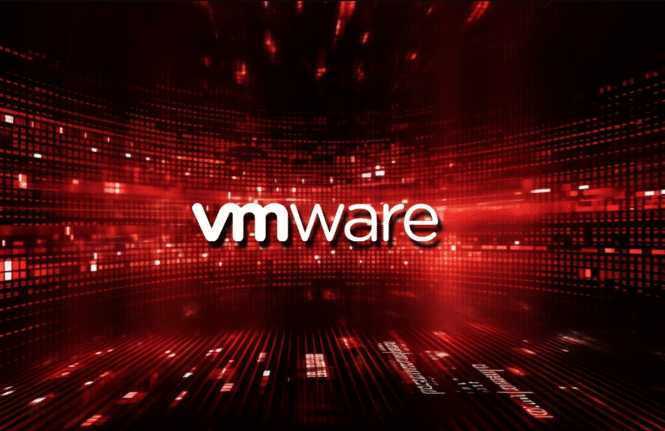
Thin Client News March Digest

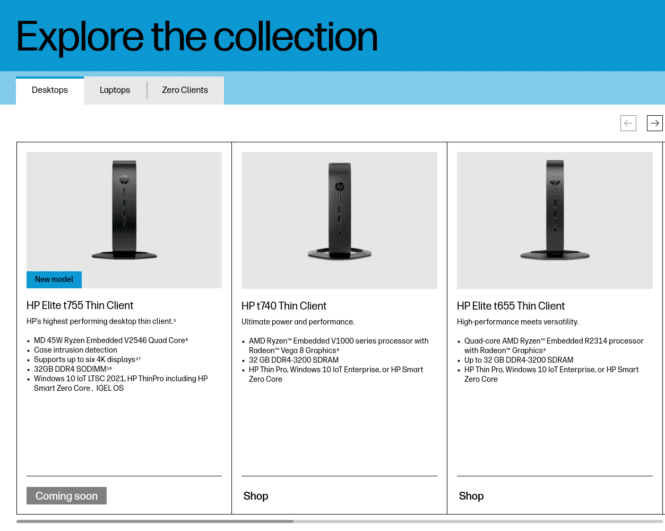
A couple of new HP thin clients announced. Pretty zippy 755 supporting up to six video streams. And then the 655 which is the nod top PCoIP (only 3 video streams).
This would work pretty nicely for digital signage or in healthcare. Start around $550 and figure $900 for the 755.
HP has unveiled a new small-form-factor PC tailor-made for enterprise operating environments. Unlike off-the-shelf SFF PCs, the HP Elite t755 Thin Client comes with unique hardware and software features that would be of little use outside niche environments. Furthermore, it runs a custom version of Windows 10 for IoT devices. It is only 50 x 210 x 210 mm in size and can fit just about anywhere on a desk. One can purchase it on HP’s website starting in January 2024.
The HP Elite t755 Thin Client feature an AMD Ryzen V2546, a 6-core/12-thread, 35-52 W TDP Zen 2 APU designed for embedded devices. One can pair it with a default Radeon iGPU or upgrade to a Radeon RX 6300 dGPU (2 GB VRAM). The system supports up to 32 GB of DDR4 3200 memory via SODIMM slots. For storage, there are 2 M.2 slots; one can be configured with up to a 256 GB NVMe SSD and the other 512 GB.
Other HP Elite t755 Thin Client specs include Wi-Fi 6E, Bluetooth 5.3, support for up to six 4K 60 FPS simultaneous video streams, and two optional I/O slots at the back, one of which can accommodate another GPU. At the front, there’s a 1x USB 3.2 Gen2 Type-C port, 2x USB 3.2 Gen1 Type-A port, and a 3.5 mm combo jack. Rear I/O is limited to 4x DP 1.2 ports, 4x USB-A (2.0) ports and an RJ45 Ethernet jack.
Noted on Notebookcheck.net
HP has announced another small-form-factor PC alongside the HP Elite t755 Thin Client. The HP tz655 Trusted Zero Client is targeted towards use in government establishments. It is somewhat limited in its hardware capabilities, but that is to be expected from this class of devices. One can purchase the HP tz655 Trusted Zero Client starting in March 2024 from HP’s website.
An AMD Ryzen™ Embedded R2314 (4-core/4-threads, max 35 W TDP) powers the HP tz655 Trusted Zero Client. One can pair it with up to 8 GB of DDR4 3200 memory and 32 GB of eMMC storage. dGPU options are unavailable, thereby restricting the number of simultaneous 4K 40 FPS video streams to three via the included DP1.2 ports.
The HP tz655 Trusted Zero Client’s lacklustre hardware is compensated by its support for PCoIP and PCoIP Ultra standards, which allows it to connect to a more powerful device. For I/O, there’s a USB 3.2 Gen2 Type-C port, 2x USB 3.2 Gen 2 Type-A ports and a 3.5 mm combo audio jack at the front. On the rear, there are 4x USB 2.0 Type-A ports, an RJ45 Ethernet jack and an empty slot that can be populated with an extra USB-C port.
Here is the HP thin client site
More news from October 2023 in the Thin Client computing space
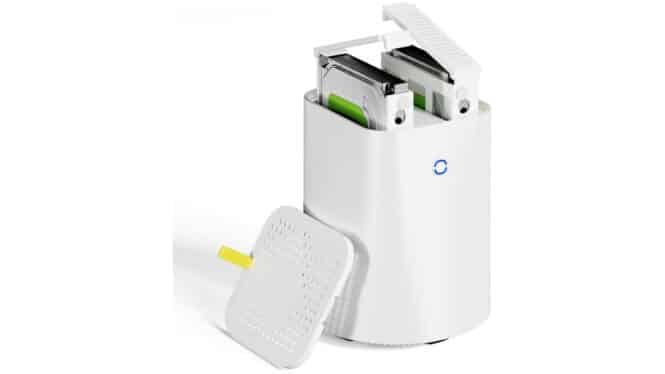
The AOOSTAR R1 is a versatile device that can function as a mini-PC, NAS, or router.
🔹 It has a compact cylindrical design, measuring 6.38 x 6.38 x 7.8 inches and weighing 2.2 pounds.
🔹 Powered by an Intel 13th Generation Alder Lake-N processor, specifically the Intel N100, with quad-core performance.
🔹 Offers one SO-DIMM memory slot for DDR4-3200 memory and one M.2 2280 NVMe slot. 🔹 Features two 3.5-inch drive bays for high-capacity drives, allowing it to be used as a NAS.
🔹 Equipped with two 2.5 Gigabit Ethernet ports, dual-band Wi-Fi 6, and Bluetooth 5.2 for networking.
🔹 Provides various connectivity options, including USB 3.2 Gen 2 ports, USB 2.0 ports, USB type-C port, audio connector, and DisplayPort 1.4 output.
🔹 Available in two models, with the barebones version priced at $259 and a higher-end model with 16GB memory and 512GB SSD priced at $319.
Currently, the AOOSTAR R1 is available for preorder at $269 on Amazon with a $50 coupon code. 🔹 Amazon will start shipping AOOSTAR R1 orders on October 26. Another model, the AOOSTAR N1 Pro, featuring the Ryzen 5 5500U, is available for $399 for those needing more power.
Datapoints — 2023 Global Thin Clients Market Recent Developments: According to a report on LinkedIn, the global thin clients market size was valued at USD 989.34 million in 2022. It is expected to expand at a CAGR of 3.84% during the forecast period.
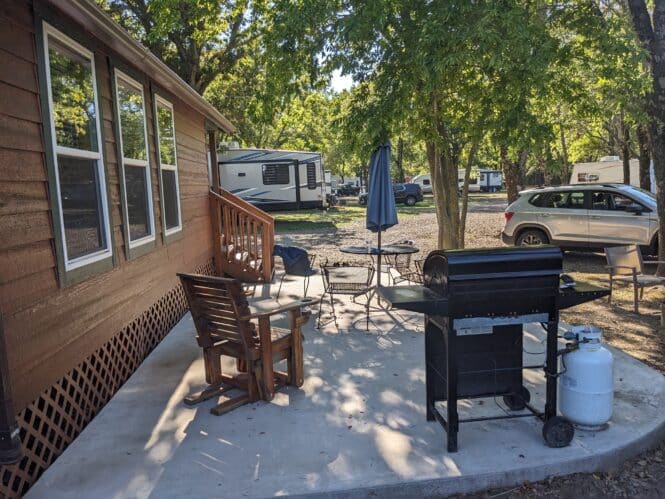
From LinkedIn
It’s common to assume that by browsing the internet companies are collecting boatloads of personal information about you and your devices.
If you go to Amazon and buy some toothpaste via their app or browser, then like idiots there will be ten different sites that start showing you ads for toothpaste.
No thanks, I just bought some…
Paranoids like me tend to torque down our browsers and refuse Javascript or cookies. Many sites stop functioning and become inaccessible.
Accessibility should be provided to all whether or not we want our personal information harvested right? Then it becomes inaccessible. Maybe the WCAG testers missed that.
Here are a few pictures for context, real context. These are from my mobile phone this morning October 10th. First one is the main screen showing 36,000 blocks in the last 7 days. Bear in mind that most of that time I was at a KOA campground on a bare minimum internet connection (1.1 Mbps)

Okay, that kind of sets the table I think. Here is a closer look at what they want from my Android phone (Pixel4)

As a PSA I just posted a note on HIPAA and Costco. Costco sued for HIPAA. Allowed Meta to track users on website.
https://www.seattletimes.com/business/costco-accused-of-violating-online-customer-privacy/
I have the Costco app on my phone. I rarely ever use it (or the website for that matter). Anyway I thought I would open it and navigate to 2 or 3 places and see what was tracked. I went to Shop, then Pharmacy, and then Travel. 360 blocks from just 4 clicks.

Never underestimate the tech companies. As Nick Danger used to say Relentless. They really aren’t much different than the Russian or Chinese hackers trying to install ransomware on your corporate computers.
This is an article by Kiosk Kiosks so a photo of some kiosks is mandated to appear relevant. Here is partial photo of CLEAR line at DIA and TSA Pre on Thursday morning at 6:30am. Line of machines twice as long.

New product by Elo for Linux – I-Series Slate Linux Debian 10. Complete with a brilliant 15.6-inch Full HD interactive display, Linux Debian 10 OS and Rockchip processor, the I-Series Slate delivers a stunning design, 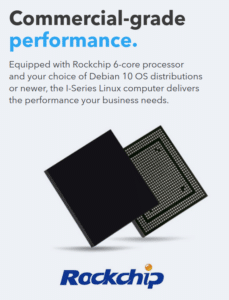
With decades of development and customizations made to support global enterprise customers, Elo’s Linux-based platform offers Linux device drivers, uniform SDKs, a constantly growing set of tools and an expansive lineup across sizes and form factors.
Other Announcements
Be advised that the PayPoint and PayPoint Pro for Android are being discontinued and will be replaced by the new EloPOS™ for Android product line including the EloPOS Z10, EloPOS Z20 and EloPOS Z30. Explore the values and differences between the models in the info sheet.
Be advised that Intel has discontinued the J4125 CPU included in the EloPOS Celeron models. As a result, the affected models will be discontinued and transitioned to Intel’s G4900T Coffee Lake Celeron processor. While we work to minimize product changes, they are needed from time to time. When this occurs, we try to offer a suitable replacement product with equal or better specifications. Please view the PMB 783 for more information.

YORK, Pa. – KioWare is excited to announce the release of a KioWare OS for Linux product. Originally only available for Android, KioWare OS for Linux is our most secure product to date. Both options were created to provide customers with an industry-leading, customizable kiosk solution that saves time and money.
[Note too that for hardware Elo has just announced a new line of Linux terminals]
Our new KioWare OS product has been designed to enable a device to become a kiosk appliance where KioWare OS for Linux is completely in charge of the device from power up to power down, and only loads what is necessary to operate as a self-service kiosk. Our Configuration Tool makes it easy to set-up the kiosk and allows you to control exactly how you wish the kiosk to function.
KioWare OS for Linux is lightweight enough to run on smaller devices, such as the Raspberry Pi or ASUS Tinkerboard, as well as larger x86-64 devices.
Many features that you’ve come to love with other KioWare products are available for Linux, including:
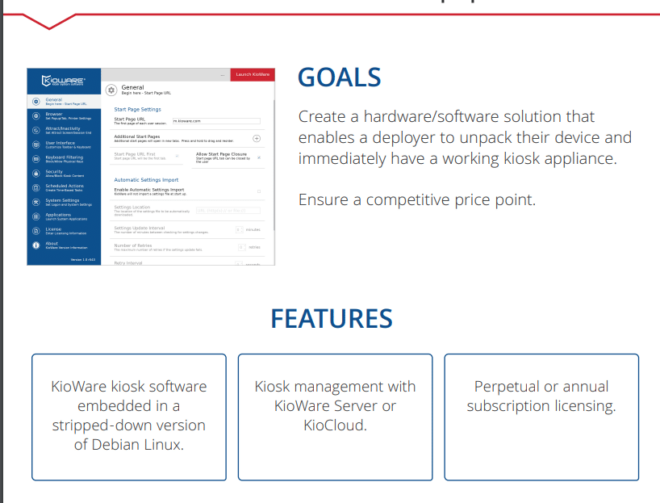 KioWare OS for Linux is currently available in our Lite format. For a full list of features and pricing information, click here.
KioWare OS for Linux is currently available in our Lite format. For a full list of features and pricing information, click here.
Analytical Design Solutions, Inc. dba KioWare has been in business since 1991 providing IT consulting to businesses of all sizes is located in York, Pennsylvania, and is a worldwide market leader in self-service kiosk and purposed device markets. KioWare is kiosk system software that kiosk applications are built on and is used in over 15,000 projects in over 140 countries with project deployments that range from a handful to many thousands of kiosks.
Linux® is the registered trademark of Linus Torvalds in the U.S. and other countries.


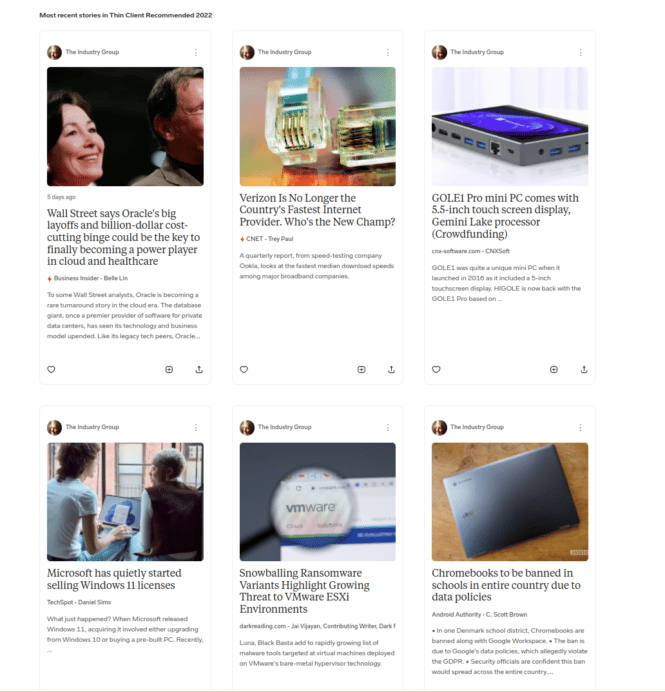
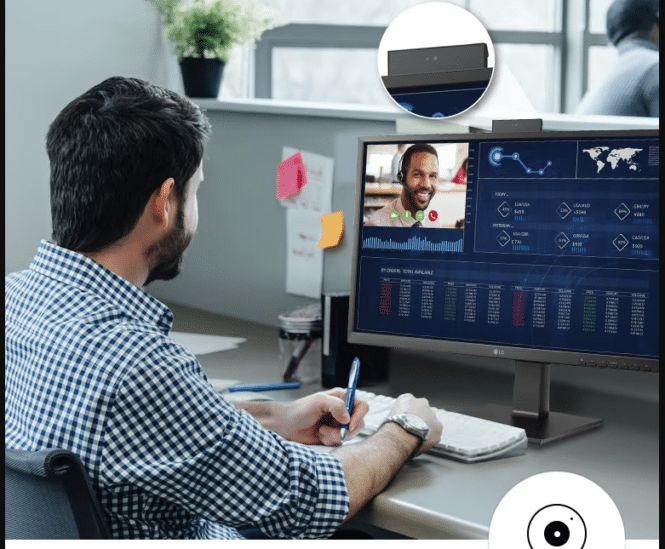
Get information on the LG 27” FHD All-in-One Thin Client with IPS Display, Quad-core Intel® Celeron J4105 Processor, USB Type-C™. Find pictures, reviews, and tech specs for the LG 27CN650N-6A
LG offers various Thin Client form factors. LG’s excellence in display products can add value to your work environment with better performance.
LG’s 27CN650N-6A supports up to 4K UHD resolution dual displays. With the flexibility for multi-monitor set-up, seeing more is easy.
Create a comfortable workspace with versatile screen tilt, height, pivot and swivel adjustments and the one click stand feature.
Blocked executables and sandboxing technology eliminates the need for antivirus software with ChromeOS Flex. Combine this with our All-in-One Thin Client to keep work safe and secure.
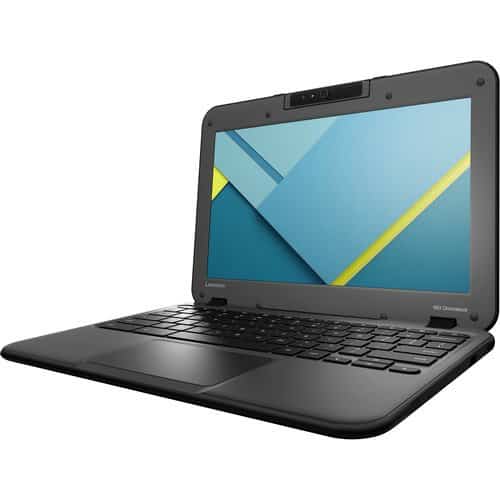
Purchase of 1000 Chromebooks Notes Granbury ISD is looking to purchase a minimum of 1000 Chromebooks with this minimum specs: 4 GB RAM 32 GB Storage 2 in 1 capability (Tablet Mode) Touchscreen Chrome OS license evaluation will be based on best price 60% and availability 40% Contact Information Name Bradee Watson Address 217 N. Jones St Purchasing Granbury, TX 76048 USA Phone (817) 408-4087 Fax (817) 408-4033 Email [email protected] Bid Documents Document name Format Data pager Data pager 1 Page size: PageSizeComboBox select 10 15 20 50 2 items in 1 pages Bid Invitation (please login to view this document) Acrobat / PDF Public Question & Answer (please login to view this document) Acrobat / PDF Bid Attachments File Name Description File Size Data pager Data pager 1 Page size: PageSizeComboBox select 10 15 20 50 2 items in 1 pages IWT bidder_requirements rev 4-17-17.pdf (please login to view this document) Bidder Requirements 83 KB General Terms and Conditions 4-17-17a.pdf (please login to view this document) General Terms and Conditions 108 KB
| Status: | Post-RFP |
|---|---|
| Solicitation Number: | 2023-18 |
| Posting Date: | 07/19/2023 |
| Solicitation Date: | 07/19/2023 |
| Response Date: | 07/27/2023 (in 5 days) |
| Vertical: | |
| Primary Requirement: | Computer Equipment |
| Place of Performance: | Granbury, TX 76048; Hood County, TX |
| Bid Notification Website: | https://granbury.ionwave.net/Login.aspx |
| Created Date: | 07/19/2023 |
| Last Update: |
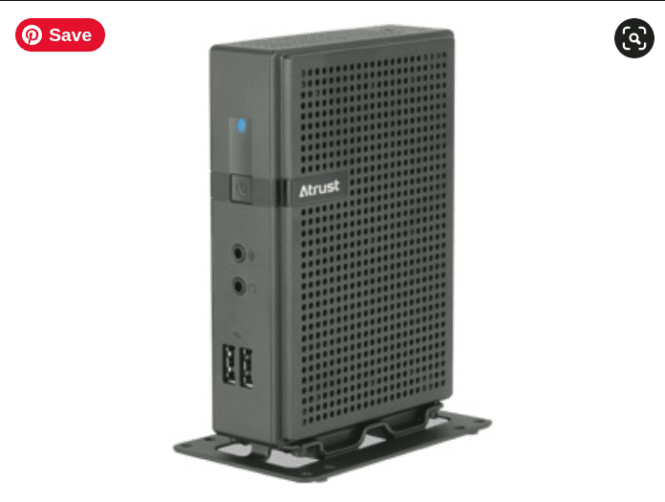
INVITATION FOR BIDS NO. 88-230036-TH
CENTRAL PIEDMONT COMMUNITY COLLEGE
Procurement Department Offers will be publicly opened: 02/09/2023 2:00 P.M.
Issue Date: 01/26/2023
Refer ALL inquiries regarding this IFB to:
Tim Hawkins
[email protected]
704-330-2722 ext. 3025
Commodity Number: 43211
Description: Thin Clients
Using Agency: Central Piedmont Community College
See page 2 for mailing instructions. Requisition No.: PR12516092
.SPECIFICATIONS
Table 1: Atrust t176W Client
Processor Intel Braswell Quad Core 1.04GHz (Turbo 2.0G)
Memory 4GB System Memory
Storage 32GB Flash Memory
Warranty 3 year warranty
Wireless WiFi 802.11 b/g/n
Operating System Custom CPCC-Provided Image – Windows 10 2019 LTSC
Other Citrix Ready Certified
Other Software Atrust Device Manager (ADM) / Atrust Client Setup License
(ACS)
FURNISH AND DELIVER
ITEM # QTY UNIT DESCRIPTION UNIT COST EXTENDED COST
1 85 Each Atrust t176W Client as specified in SECTION
3.9 TABLE 1
2 85 Each Centralized Device Management Software as
specified in SECTION 3.9 TABLE 1
3 85 Each Atrust t176 VESA Bracket – customized to fit Dell
P2319H Display
4 85 Each Atrust t176W Customized operating system
image with customer-specific applications preloaded
Total Offer Cost for Year 1 ___

The annually-passed National Defense Authorization Act (NDAA) often contains provisions dealing with the procurement and use of technology by the Department of Defense (DOD) and other federal agencies. The NDAA for Fiscal Year 2023, passed in mid-late December, was no exception, containing several provisions dealing with cloud computing. Today’s post continues an analysis of that legislation (begun last week with this post on inflation) for potentially useful information.
Support for R&D of Bio-Industrial Manufacturing Processes
Section 215 concerns the esoteric subject of R&D for bio-industrial manufacturing. Directing the Secretary of Defense to support “the development of a network of bio-industrial manufacturing facilities to conduct research and development,” the provision outlines that such support “may consist of funding one or more existing facilities or the establishment of new facilities.” These facilities will facilitate the creation of “materials such as polymers, coatings, resins, commodity chemicals, and other materials with fragile supply chains.”
Cloud computing likely comes in with the provision’s demand that the DOD establish “an interoperable, secure, digital infrastructure for collaborative data exchange across entities in the bio-industrial manufacturing community, government agencies, industry, and academia.” While not explicitly mentioning cloud, past collaborative research efforts along these lines have tended to leverage cloud infrastructure for the dissemination of data. One can look at research on cancer at the National Cancer Institute and on meteorology at the National Oceanic and Atmospheric Administration for examples. Other examples can be found in the annual budget supplement put out by the Networking and Information Technology Research and Development (NITRD) program, too. Call it a hunch that this effort results in cloud-related work.
Plan for Commercial Cloud Test and Evaluation
Section 1553 instructs the Secretary of Defense, in consultation with industry, to “implement a policy and plan for the test and evaluation of the cybersecurity of the clouds of commercial cloud service providers that provide, or are intended to provide, storage or computing of classified data of the Department of Defense.” The final plan adopted is supposed to include a “requirement that future contracts with cloud service providers for the storage or computing of classified data … permit[s] the Secretary to conduct independent, threat-realistic assessments of the commercial cloud infrastructure
Clauses will be inserted into contracts with CSPs handling classified data giving the DOD permission to access and test the cloud infrastructure being used to house the classified data in question. This provision appears to be related to the forthcoming Cybersecurity Maturity Model Certification (CMMC) program. Presumably, the first contracts that will see these new provisions will be those awarded for the Joint Warfighting Cloud Capability. I don’t have access to a copy of the finalized contract to confirm if a similar clause is not already in those documents.
Demonstration Program for Component Content Management Systems
Section 917 orders the DOD Chief Information Officer to carry out a pilot program that demonstrates “the application of component content management systems to a distinct set of data of the Department.” The use of cloud-based content management systems is growing rapidly across the federal government so I’m willing to bet dollars to donuts that the CMS piloted will be a cloud-based capability hosted by one of the JWCC CSPs. This would be the path of least resistance. If that isn’t the route taken then industry partners should keep an eye open for a Sources Sought notice this fiscal year.
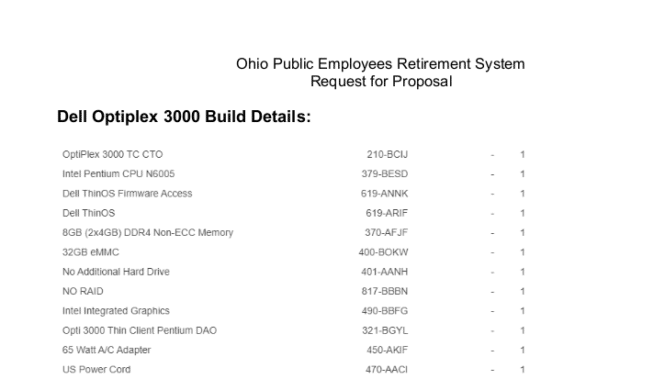
The Ohio Public Employees Retirement System is seeking proposals for the purchase of 220 Dell Optiplex 3000 thin clients for a hardware refresh project. The exact specifications of these thin client models can be found in section D.2 – Requirements. January 11 deadline
thin client Dell-OptiPlex-3000-Thin-Clients-RFP
Other RFPs
Here is a look at contracts expiring next 12 month
| Buying Organization | Contractors | Contract Number |
| NORTH CAROLINA >> INFORMATION TECHNOLOGY SERVICES, OFFICE OF | C DW-G | 204A |
| NORTH CAROLINA >> INFORMATION TECHNOLOGY SERVICES, OFFICE OF | BRIDGETEK SOLUTIONS LLC (96GN5) | 204A |
| NORTH CAROLINA >> INFORMATION TECHNOLOGY SERVICES, OFFICE OF | MICROSOFT CORPORATION (60128) | 204A |
| NORTH CAROLINA >> INFORMATION TECHNOLOGY SERVICES, OFFICE OF | Netcom Business Solutions, Inc | 204A |
| NORTH CAROLINA >> INFORMATION TECHNOLOGY SERVICES, OFFICE OF | Y & S TECHNOLOGIES | 204A |
| NORTH CAROLINA >> INFORMATION TECHNOLOGY SERVICES, OFFICE OF | Davenport Group | 204A |
| NORTH CAROLINA >> INFORMATION TECHNOLOGY SERVICES, OFFICE OF | Tiber Creek Consulting | 204A |
| NORTH CAROLINA >> INFORMATION TECHNOLOGY SERVICES, OFFICE OF | Data Networks of America | 204A |
| NORTH CAROLINA >> INFORMATION TECHNOLOGY SERVICES, OFFICE OF | HP | 204A |
| NORTH CAROLINA >> INFORMATION TECHNOLOGY SERVICES, OFFICE OF | Trafera, LLC | 204A |
| NORTH CAROLINA >> INFORMATION TECHNOLOGY SERVICES, OFFICE OF | DELL TECHNOLOGIES, INC. | 204A |
| NORTH CAROLINA >> INFORMATION TECHNOLOGY SERVICES, OFFICE OF | SHI INTERNATIONAL CORP. (1HTF0) | 204A |
| NORTH CAROLINA >> INFORMATION TECHNOLOGY SERVICES, OFFICE OF | Lenovo | 204A |
| NORTH CAROLINA >> INFORMATION TECHNOLOGY SERVICES, OFFICE OF | Applied Data Technologies | 204A |
| VIRGINIA >> INFORMATION TECHNOLOGIES AGENCY, VIRGINIA | APPLIED TECHNOLOGY SERVICES (3CL94) | VA-190822-ATS |
| VIRGINIA >> INFORMATION TECHNOLOGIES AGENCY, VIRGINIA | CAS SEVERN INC | VA-190822-CASS |
| VIRGINIA >> INFORMATION TECHNOLOGIES AGENCY, VIRGINIA | HP, INC. (HEWLETT-PACKARD COMPANY) | VA-190822-HP |
| VIRGINIA >> INFORMATION TECHNOLOGIES AGENCY, VIRGINIA | NCS TECHNOLOGIES, INC. (1BEK6) | VA-190822-NCS |
| VIRGINIA >> INFORMATION TECHNOLOGIES AGENCY, VIRGINIA | SHI INTERNATIONAL CORP. (1HTF0) | VA-190822-SHI |
| VIRGINIA >> INFORMATION TECHNOLOGIES AGENCY, VIRGINIA | ATTRONICA | VA-190822-ATRO |
| VIRGINIA >> INFORMATION TECHNOLOGIES AGENCY, VIRGINIA | DALY COMPUTERS, INC (08CG2) | VA-190822-DALY |
| VIRGINIA >> INFORMATION TECHNOLOGIES AGENCY, VIRGINIA | Rugged Solutions America LLC | VA-190822-MCT |
| VIRGINIA >> INFORMATION TECHNOLOGIES AGENCY, VIRGINIA | Insight Public Sector Inc. | VA-190822-PCMG |
| VIRGINIA >> INFORMATION TECHNOLOGIES AGENCY, VIRGINIA | CDW CORPORATION | VA-190822-CDWG |
| VIRGINIA >> INFORMATION TECHNOLOGIES AGENCY, VIRGINIA | Dell Marketing LP | VA-190822-DELL |
| VIRGINIA >> INFORMATION TECHNOLOGIES AGENCY, VIRGINIA | ELECTRONIC SYSTEMS, INC. (8AAQ5) | VA-190822-ELSY |
| VIRGINIA >> INFORMATION TECHNOLOGIES AGENCY, VIRGINIA | NETWORKING TECHNOLOGIES AND SUPPORT, INC. (1GLJ7) | VA-190822-NTS |
| TEXAS >> NATIONAL COOPERATIVE PURCHASING ALLIANCE | DELL TECHNOLOGIES, INC. | 01-42 |
More Posts

Quite a bit of news in the thin client world this month.
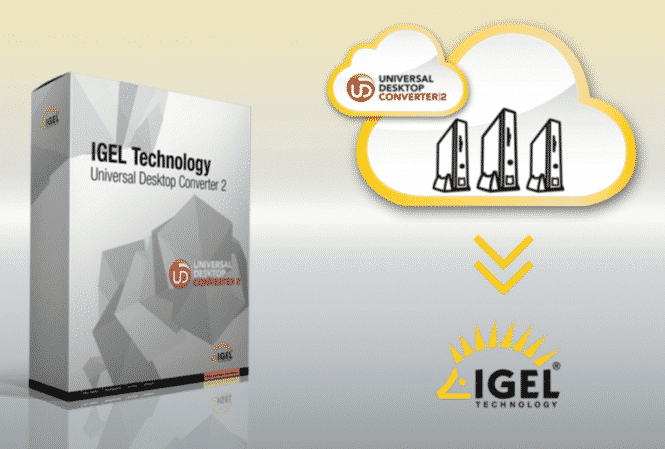
IGEL teams with HP, Lenovo, and LG to deliver its managed endpoint operating system, enabling partners and customer to derive more value from their investments in Microsoft, Citrix, and VMware VDI, DaaS and SaaS solutions
UK, Reading. November 17, 2022 – IGEL today announced it is ending production of IGEL-branded hardware and is partnering with leading device manufacturers HP, Lenovo and LG, to deliver its managed endpoint operating system for the modern workplace.
“We believe that the timing couldn’t be better to become singularly focused on the delivery of a software platform that improves security and manageability at the endpoint, enhances productivity, and optimizes the employee experience,” said Jed Ayres, CEO, IGEL. “Through our alliances with HP, Lenovo and LG, we are also expanding our global reach and doubling-down on innovation that enables our partners and customers to derive more value from the investments they are making in Microsoft, Citrix, and VMware VDI, DaaS and SaaS solutions.”
After nearly 20 years of market leadership as the No. 1 thin client manufacturer in Germany and one of the top three globally, IGEL began its pivot in 2016 to a software-focused company. “Expanding the global adoption of our endpoint operating system was the right decision, especially at a time when there is more demand than ever for a more secure, manageable, cost-effective and rich Windows experience across a growing array of endpoint devices that support today’s hybrid work environments,” added Ayres. “We would like to thank Arrow Electronics and their Intelligent Solutions Group for their guidance and support in helping us successfully make this transition.”
Kristin Russell, President, Global Enterprise Computing Solutions at Arrow Electronics, said, “Arrow is proud of the strong relationship we have with IGEL, not only as a value-add distributor, but as the provider of global integration and supply chain services that served as a catalyst in helping them successfully exit the hardware business. We are excited to see IGEL complete this strategic pivot and become a leading provider and innovator in the EUC space with the delivery of a managed endpoint operating system that is tailored to meet the needs of today’s VDI, DaaS and SaaS-driven workplaces.” To view the Arrow Electronics case study “How IGEL successfully transitioned to a software-centric business model,” click here: https://www.arrow.com/ais/
HP, Lenovo, and LG are all members of IGEL Ready, an extensive partner ecosystem featuring more than 120 providers of software, hardware, and peripheral solutions that have been validated for integration with IGEL OS. IGEL Ready gives technology partners the ability to reach more than three million IGEL OS-powered endpoints, more than 17,000 IGEL customers, and thousands of resellers who are addressing a variety of end-user use cases and environments.
IGEL also hosts an active and growing EUC community with more than 10,000 members.
Integrated endpoint devices from HP, Lenovo, and LG, that are IGEL OS certified and supported are showcased on dedicated pages demonstrating the transition partners and customers can make in the delivery of IGEL OS through these partners. A limited supply of IGEL-branded hardware is still available from authorized distributors and resellers with promotional programs running through Q1’23, or until inventory has been depleted. IGEL will continue to support its five-year warranty for new and previously purchased hardware systems.
Supporting Quotes
“IGEL and LG have built a very productive partnership so far, and with IGEL’s strategic decision to focus on the software platform, our partnership will grow stronger with LG offering competitive endpoint devices powered by IGEL’s platform. The availability of IGEL OS on LG’s All-in-One, Desktop, and Mobile Thin Clients will provide enhanced end-customer benefits and employee experience for a broad range of vertical markets including healthcare, financial services, education, and the public sector.” ~ Young Jae Seo, Senior Vice President of IT Business Unit, LG Electronics.
“Our collaboration with IGEL provides hybrid workforces with superior options for digital workspaces. Available on a range of HP’s industry-leading thin client platforms, IGEL delivers a rich user experience that is secure, easy to manage, and cost-effective.” ~ said Alex Thatcher, Sr. Director, HP Cloud Clients.
“The shift to hybrid work has challenged many organizations that must now manage widespread VDI, DaaS and SaaS deployments. IGEL provides a simple, more secure, and cost-effective way to deliver these applications, and when combined with Lenovo’s end user computing solutions for the modern workplace, gives any business, from SMBs to global enterprises, the ability to enable more secure, productive hybrid work while reducing the cost and complexity of managing desktops and users.” ~ Andy Nieto, Senior Solutions Manager, Lenovo.
“Citrix and IGEL have been working together for many years to deliver secure solutions that provide end users the freedom to work securely, from anywhere, on their device of choice. By teaming up with leading hardware manufacturers HP, Lenovo, and LG to deliver IGEL OS, our mutual customers will benefit tremendously from greater flexibility in selecting the right hardware platform, delivering VDI and DaaS infrastructure in a way that optimizes the employee experience.” ~ Calvin Hsu, Vice President, Product Management and Product Marketing, Citrix, a business unit of Cloud Software Group.
“Our clients rely on CPC to source, configure, and deliver end-to-end technology solutions that are reliable, easy, and powerful. The alignment of IGEL with HP, Lenovo, and LG creates an incredible opportunity for us to grow our IGEL business because of IGEL’s huge ecosystem of solutions that we know and trust.” ~ Bruce Poor, President, Computer Products Corp.
“IGEL’s alliances with three of the leading hardware manufacturers – HP, Lenovo, and LG – is exciting news for us and for our clients. We pride ourselves on working with our clients to select the best solutions for solving the unique business and technology challenges they face, and this now gives us greater flexibility of choice when it comes to selecting the right endpoint hardware for the delivery of IGEL within our clients’ Microsoft, Citrix, and VMware environments.” ~ Mike Strohl, CEO, e360.
“ADN has had a long-standing relationship with IGEL in helping it become the No. 1 thin client in Germany. We look forward to continuing supporting IGEL in this transition to a 100% software-driven model as it offers us greater flexibility of choice on existing or new hardware for the delivery of IGEL OS within our clients’ Microsoft, Citrix, and VMware environments.” ~ Hermann Ramacher, Founder & Managing Director, ADN Group.
“IGEL’s alliances with three of the leading hardware manufacturers and long-term strategic partners of Bechtle, HP, Lenovo, and LG, is exciting news for both us and our clients. We are working with our clients to select the best possible solution for solving the unique business and technology challenges they face, and this now gives us desired flexibility in selecting the right endpoint hardware for the delivery of IGEL within our clients VDI, DaaS or SaaS environments.” ~ Ralf Beck, Director Software Product Management, Bechtle Logistic & Service GmbH.
“Our clients rely on Cancom to recommend solutions that are reliable, easy to use and sustainable. The possibility to reuse existing hardware and the alignment between IGEL and HP, Lenovo, and LG creates an incredible opportunity for us to grow our IGEL business by providing access to a larger ecosystem of solutions.” ~ Carsten Pavlovits, Director Competence Center Enterprise Workplace, CANCOM.
“Getech has been delivering IGEL OS on a variety of third-party hardware offering, including LG, for over a year and this announcement further validates that customers who chose to secure their system with IGEL OS have the freedom to reuse or replace their existing hardware.” ~ Guy Watts, Managing Director, Getech.
Register Now for the 2023 DISRUPT EUC Forum
IGEL brings this active EUC industry together every year at the DISRUPT End User Computing (EUC) Forum, the ultimate EUC event. IGEL is the only company in the world to host global events focused solely on the EUC space. DISRUPT EUC will return in 2023 as two large, multi-day events featuring industry innovators and thought leaders, a technical bootcamp, and an expo with hands-on demonstrations from IGEL ecosystem partners.
The 2023 DISRUPT EUC Forum will take place in Munich, February 14-16, 2023, followed by the North America event in Nashville, Tenn., April 3-5, 2023. Now through December 31, 2022, discounted registration is available for $199 per person using the code EARLYBIRD. After December 31, 2022, registration will be $399 per person. To register, visit: www.disruptEUC.com.
IGEL on Social Media
Twitter: www.twitter.com/IGEL_
Facebook: www.facebook.com/igel.
LinkedIn: www.linkedin.com/company/igel-
YouTube: www.youtube.com/user/
IGEL Community: www.igel.com/community
About IGEL
IGEL offers the leading platform for endpoints to deliver a rich end user computing experience that’s secure, manageable, and cost effective, across VDI, DaaS and SaaS. The company has a growing ecosystem of more than 120 IGEL Ready technology partners. IGEL unlocks a productive digital workspace experience for leading enterprises in healthcare, finance, retail, manufacturing, higher education, and government. With offices in Europe and the United States, IGEL is represented by partners in over 50 countries. For more information on IGEL and to download IGEL software, or request a certified endpoint, visit www.igel.com.
###
IGEL Media Contact:
Tom Herbst
Tel: +44 (0)7768 145571
Email: [email protected]

It’s a business for LG (what isn’t…). Here are the featured products
Assisting Google
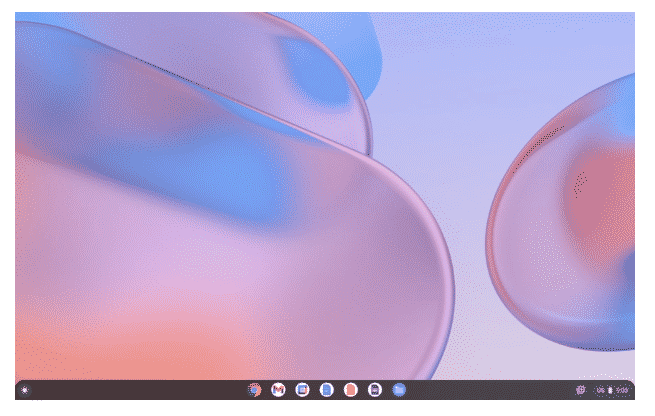
Video below from Hackaday
In Brief — To us, Google Flex seems to be an answer for corporate environments trying desperately to milk their old Celerons, i3s and i5s for one last cycle. Upgrading to Windows 11 isn’t free but it does come with the usual domain management that most IT departments are addicted to. The cost of Flex is about on par with Windows except that now IT has two OS’s to support. They already get bothered by the Apple devotees (with high position in hierarchy) but those are the exceptions. Windows terminal manager gives the zero client for the most part.
It is making a play for digital signage media players but that is a limited market too and they have no robust CMS to dovetail into that. Hard to imagine digital signage networks running off old PCs but who knows. Another segment proposed is kiosks but there any new kiosks are more likely to come with Dell computers preloaded with Windows. Kiosks in the field that could use Flex is just informational web-based kiosks (wayfinding e.g.). Any transactional kiosks (with myriad of devices) are not going to be candidates. Major kiosk installations running LTSB are even less likely as the horrors of patch management have been mitigated (mostly).
For the most part it appears to be Google’s attempt to monetize its acquisition a few years ago and provide a surrogate OS for the old generation computers that are not Chromebooks but basically can be. To date it is mostly motto-based. We checked on a quote from resellers such as Synnex and they seem unprepared to provide configuration quotes. Mostly it seems to be a big excuse to have that endless “tell me about your situation” user dump. And once you go enterprise with monitoring, the costs even out for the first + you have new recurring monitoring cost + you have to manage some with this and some with that. Hopefully that power supply, memory or hard drive that is 5 years old doesn’t crap out on you.
There are some early success stories such as hotels converting their windows pcs. We would not be surprised to see banks and financial institutions which are historically tight budget, try to convert. The security is a good selling point and managing Windows patches is as close to hell as you can come.
The video goes thru a lot of the problems you may run into and it is always good to get point of view from both sides of the aisle so to speak.
For more information email [email protected]
Excerpt:
You’ve probably heard about Google Chromebooks. Like Android, Chrome OS is based on some variant of Linux, but it is targeted at the “cloud first” strategy so Chromebooks typically don’t have a huge amount of storage or compute power. If you have a real Chromebook, you can also use it to run certain other kinds of programs via virtualization. However, Google has recently pushed out Chrome OS Flex which is meant to install on a spare laptop you might happen to have hanging around. Seems attractive to take that only Windows 7 laptop and repurpose it to run Chrome OS, especially if you can run Linux apps on it. Unfortunately, Chrome OS Flex has a very different use case and I would only recommend installing it if you meet the exact use case it addresses.
The other option, of course, is to just install Linux on that old hardware. There are several distributions that are made for that purpose and, honestly, even most of the major distributions will work fine on older hardware with a little tweaking to turn off some of the more resource-costly features. That assumes you know how to install, tweak, and maintain Linux.
THAT’S WHAT IT IS FOR
That is, in fact, the exact use case for Chrome OS Flex. If you want to give Grandpa your old laptop, putting Linux on it can be very challenging, unless Grandpa is pretty tech-savvy. Even people who are pretty comfortable with Windows or the Mac can find the number of options, log files, and command lines daunting for Linux. Some distributions are better than others, but in the end, if you are having a bad day, you really need to know something about the system or be willing to learn it.
Chrome OS deliberately doesn’t give you much choice. The installation is painless but inflexible. You have to create a USB drive on a working computer and the installer gives you no options to, say, install as a secondary operating system. You can boot from the USB and either try the OS in live mode or install it, wiping out your hard drive. That’s it.
If all you want to do is surf the web and use Chrome-based applications, that’s great! The system works well and is pretty snappy. But what about running apps from other systems? Unlike real Chrome OS, you can’t run Android apps or much of anything else. You can, maybe, run Linux applications, but there are a few catches.

From our Flipboard channel.
More Links
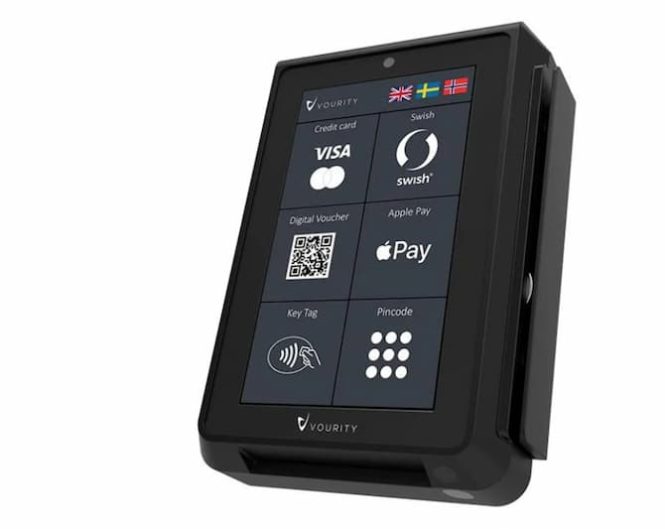
The next generation payment devices really don’t care what OS you are running. You could be running Flex, Linux, Android or Windows for that matter. You do need an Ethernet or Bluetooth connection though. Cloud payment systems have come a long way from Avalara and website e-commerce. Now cloud-based payment unifies mobile pay devices which are increasing ever faster and using the web to handle the transaction.
Another consideration is that within a restaurant or POS location, while it may have kiosks equipped with these devices, an establishment can extend other modern digital wallet payment methods to customers at the counter. Maybe I want to pay using my Paypal account. Why not?
McDonalds and printers is a good example of just buying one kind of printer, when in fact they really have two usage models. One is a simple receipt and the other is being able to print stickers for merchandise thru the drive thru window. They purchase the upscale model in large quantities and get a discounted price. They only have to worry maintenance wise about one single device.
The latest payment product from datacap systems, inc. shows how payment is now a simple http/https post. The payment device in this case is a PAX Android IM30 or Ingenico Telium TETRA device. For more information contact datacap or email [email protected]
DC Direct embeds payments logic into the Ingenico Group Telium TETRA and Pax Android line of pads to facilitate a direct communication between the device and NETePay Hosted – no Datacap hardware or software is necessary.
George Hurdock with datacap — All of our middleware lives on the card entry device, and communicates directly to our NETePay Hosted gateway architecture, so as long as the POS developer can perform an http/https post, it doesn’t matter which OS they are communicating from.
The IM30, from Pax, is a standalone contact and contactless Android reader for self-service payments. It accepts all transaction types and is ideal for vending machines, kiosks or any unattended payment terminal. The IM30 connects via Ethernet or Bluetooth.
Our Developer Portal is designed to help developers rapidly integrate payment processing using Datacap’s hardware and processor-agnostic payment interfaces.
Including Full API documentation for:
IM30 Info
The IM30 is an all-in-one unattended payment terminal that is designed to handle all payment methods including EMV®, MSR, and NFC contactless, QR code, as well as NFC-enabled mobile wallets. Built to last in any environment, it offers added conveniences and security like push-to-talk, picture surveillance, and automated customer identification. The IM30 performs best in all kinds of indoor and outdoor self-service environments with high transaction volumes, such as vending machines, ticketing machines, on-street and off-street parking, petrol forecourts, car-washes and store kiosks, self-service checkouts, and more.
A digital wallet is a virtual version of your everyday wallet. It stores a user’s various payment types–credit cards, debit cards, bank account information, loyalty cards, and more–on an app or browser that can be accessed easily and quickly online or in-store to make a payment. Businesses can accept digital wallets online and in person through a wide variety of point-of-sale solutions.
• An estimated 4.4 billion global consumers will shop with a digital wallet by 2023, accounting for 52% of ecommerce payments globally.
• 1.6 billion global consumers will pay by digital wallets at the point of sale (POS) in 2023, accounting for 30% of POS payments.
“With the increased acceptance of digital transactions, coupled with consumer preference, there’s going to be an acceleration in [digital wallet] usage, even more than there already has been,” said Dave Duncan, EVP, chief product officer at Global Payments.

July 2022 By Mike Harris, ELATEC Inc.
The California Air Resources Board recently announced a new goal of tripling electric vehicle (EV) sales over the next four years, reaching 35 percent of all new vehicle sales in the state by 2026. An executive order is already in place dictating that zero-emission vehicles will be 100 percent of all new vehicle sales in California by 2035. Electric vehicles only represent about 1 percent of the 250 million vehicles on U.S. roads today, but that is quickly changing. In addition to the California mandates, there are many other state and federal goals, along with automaker electrification plans, contributing to a rapid rise in EV sales nationwide. General Motors, for example, plans to sell only zero-emission vehicles by 2035, and the Biden administration has a stated goal of 50 percent ZEV sales by 2030. Multiple estimates put the number of EVs on U.S. roads by 2030 at 22 to 25 million.
Significant investment is needed to develop the EV charging infrastructure required to keep pace with the rapid growth in EV adoption. There are three basic types of EV chargers, also known as Electric Vehicle Service Equipment (EVSE) – Level 1, Level 2, and DC fast charging. Capabilities vary, but in general, L1 charging, which is your basic AC outlet, can provide about 4 miles of range per hour, L2 (240V AC) can provide ten range miles in an hour, and DCFC can provide an 80% charge from empty in about 30 minutes (for a standard range EV). The bulk of the EVSE needed will be L2 and DCFC, but the mix of each and where and how this will happen is still uncertain, as I will explain below.
Understanding the current state of public and shared private EVSE infrastructure can get muddy. Different sources sometimes use the terms EV charger and charging station interchangeably, which isn't always accurate. An EV charging station can have one or more chargers, and a single charger will typically have either one or two ports, which is the number of vehicles that can be simultaneously charged. According to the California Energy Commission, there are about 36,000 public EV charging stations in the state.
Per the US Department of Energy, there are about 47,000 public charging stations in the country. These numbers need to increase dramatically to support the expected number of EVs over the next several years. It's well understood that most drivers will rarely need additional public chargers, provided they can charge at home or work. Federal Highway Administration data from 2019 showed that the average American commuter drives about 40 miles per day. So, for those living in single-family homes with the ability to install an L2 residential charger, their needs would be covered mainly by plugging in overnight (excluding occasional road trips). But what about people living in apartments, townhomes, condominiums, and mixed-use dwellings? About 31 percent of the overall population lives in these types of residences. In large urban areas, it's often higher – a recent survey by Plug In America indicated that 70 percent of Los Angeles residents lived in multi-unit spaces. There are many federal and state incentives to help defray the costs of adding EVSE to multi-family structures, and more funds are becoming available with the new infrastructure bill. Still, additional obstacles to making charge-at-home more prevalent for apartment dwellers. Many pre-existing properties and parking garages can't support the power requirements for more than a small percentage of spaces to have even L2 chargers. And tapping into the grid for extra capacity is extremely and usually prohibitively expensive. Load balancing can help boost the number of EVSE systems that can be supported, but we're still talking about small numbers of chargers relative to the number of tenants. Many states are amending their building codes to require some number or percent of spaces to have EV chargers for new residential and commercial construction, which will further help expand our EVSE infrastructure. However, grid capacity is still a major roadblock to rapid EVSE deployment. A recent article by McKinsey and Company estimates that the power demand for charging the number of anticipated EVs in 2030 would equal 5 percent of all U.S. power generation today. Other models have put that number as high as 25 percent. Either way, the message is clear, we need a lot more grid capacity to enable the transition to electric vehicles.
Parallel to the development of EVSE infrastructure, new wind, solar, and other renewable energy installations will be needed to set up Smart Grids capable of handling future charging demands. Where and how much energy is required also depends on the type and location of EVSE. Most of the media buzz around EV charging is centered on expensive DCFC installations and superhubs that mimic something closer to traditional refueling stations. Still, most public and semi-private EVSE will likely be L2. A DC fast charger's total install cost is around 10x – 20x that of an L2, and having many vehicles plugged into DCFCs in one area can put enormous demands on the local grid.
For the interstate system, DCFCs are needed, and establishing strategic Alternative Fuel Corridors with EVSE located every 50 miles is the top priority for the $5B allocated to EV charging deployment in the new Bipartisan Infrastructure Law. However, in cities and urban areas, the high cost and grid demand of DCFCs make L2 chargers the clear choice in most situations, with some exceptions, including DCFCs to support future electrified ride-share vehicles and fleets.
Just exactly how the future deployment of EVSE and grid expansions will play out is complicated, and there are a lot of smart technology companies working on different aspects of the solution and from different perspectives. Still, the number of market variables makes it difficult to predict what the EV charging landscape in the U.S. will look like. While there are a lot of good federal and state incentives for multi-family structures and businesses to add EV charging capacity, the up-front costs have to be weighed against short-term ROI and long-term futureproofing. For example, California requires public EV chargers to accept credit card payments via chip card to ensure
potential consumers' greatest level of access. Apartments and workplaces can restrict their EVSE access to tenants and employees and maintain private status under California law. This enables them to avoid the additional initial cost of an EV charger that accepts EMV-certified card payments, but then they miss out on future monetization opportunities.
In some cases, attracting new residents or employees may be the only ROI for adding EVSE that is needed. Another model for supporting EV adoption among renters who don't have access to charging where they live is called power-sipping or snacking. In this model, drivers top up their batteries as they go about their business at grocery stores, shopping malls, big-box stores, movie theaters, etc. It's been well studied that EV charger usage can significantly increase dwell time at shopping locations, translating into real dollars. Additionally, big box stores and large retail chains have more resources to add EVSE infrastructure. They will likely be a large part of the EV charging solution as internal combustion engine vehicles become scarcer. It's interesting to note the complementary trends in brick-and-mortar retail – increasing foot traffic and dwell time is the primary benefit of adding EV charging capacity. Still, physical retail also continues to compete with online sales by offering services like BOPIS (buy online, pickup in-store) and enhanced delivery services like Walmart's new In-your-fridge grocery delivery service.
The U.S. lags well behind Europe and China in EVSE infrastructure and needs to accelerate quickly to meet the anticipated goals of EV adoption. Government incentives, public-private partnerships, and utility investments will be required to deploy chargers and expand the grid. In theory, drivers only need to charge at home, work, or along the highway for longer trips – but the reality of developing charging infrastructure is much more complex as we have seen, and it will undoubtedly be interesting to see how the charging market develops.
Mike Harris is responsible for ELATEC Inc's business development efforts in the Americas, focusing on strategic verticals including EV charging, Industry 4.0, and access control. He has more than 20 years of experience in product management, engineering management and R&D. Mike can be reached at [email protected] or 772-210-2263.
Mike Harris, Head of Business Development for ELATEC Inc.
Related Posts
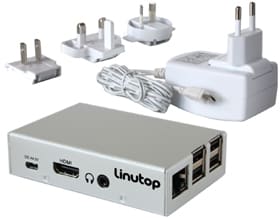
Pretty interesting option by LinuxTop ($189 Euro) for complete media player and OS for digital signage or kiosks.
-Memory:1 GB RAM & 16 GB internal flash
-Quad Core 900Mhz (ARM)
-OS Linutop OS XS preinstalled
-Size 9x6x2,4 cm (3.6×2.4×1 in) Weight: 92g (3oz)
-Power: 4W (100-240 AC adapter)
Use: Digital signage player (video hd,PDF, …) -Includes: US, UK, Europe and Australia power plugs
-1 HDMI, 4 USB2, 1 Ethernet
-Software: Epiphany, Libre Office, VNC, Linutop Kiosk, VLC
-Silent
Full featured Digital Signage Player
Comments
More Posts
Technical Documentation– Linutop OS – Operating system |
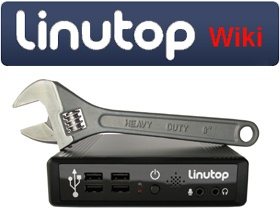 |
WIKI – Help for advanced users |
|
Support contact – Access the formMarketing Documentation
|
|
Table of Contents1. About Linutop-Kiosk
4. Digital Signage with Linutop TV5. Network settings

We monitor and quick blog thin client and cloud related recommended news on Flip.it — here is sampling of latest
More

Dave Haynes of Sixteen-Nine had Naveen Viswanatha of Google on a recent podcast to talk about Google Kiosks and Digital Signage. Here is the website and podcast link. (Screenfeed was sponsor).
Editors Note: Kiosk partners closest is MeldCX and they use kiosks from American Kiosks. They are at Hitec next week in Orlando and they will have a kiosk there with Chrome OS computer and MeldCX. The demo will show AI based check-in, identity verification, object recognition, secure payments, and other operational efficiencies to improve the customer experience. For more information or arrange a demo at the show email [email protected]
In Brief
Comments
Excerpt
You mentioned a new SKU. What is that?
Naveen Viswanatha: Yeah we’re very excited about that. The new SKU is called the kiosk and signage upgrade, and what it does is it unlocks all of the signage capabilities that an organization wants, but none of anything else that you need. And what I mean by that is that Chrome OS is an operating system that serves end user computing, as well as signage. On the end user computing side, you need capabilities to manage users, user profiles, logins, different types of login modalities. But on the signage side, you don’t really need that, right? Even if there’s end user interaction, there’s a lot of user modes and user capabilities that are not part of that overall management…
Because it’s a dumb end point in a hell of a lot of cases?
Naveen Viswanatha: I wouldn’t use the word dumb, but because it’s a highly focused endpoint, and as a result of that, we tailored a SKU which is $25 per device per year. So that’s half off, two bucks a month basically, enterprise SKU, and for that, you get this 50% off SKU and very focused functionality, still gives you all the security, all the device controls, cloud management, reporting and insights. You just don’t get the user controls that you get with the Chrome enterprise upgrade SKU, and that’s the full SKU.
But if you did want those user controls, for whatever reason it may be, could you use those? And could you run a blended network with both kinds of licenses?
Naveen Viswanatha: Absolutely and we have a lot of customers that that, that are doing exactly
Related Posts
More Posts
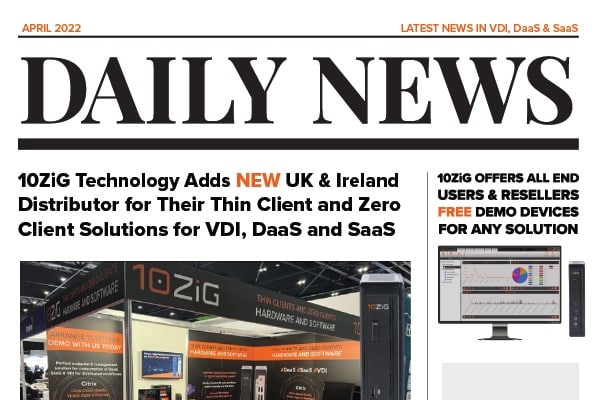
10ZiG Technology Adds New UK & Ireland Distributor for Their Thin Client and Zero Client Solutions for VDI, DaaS and SaaS
LEICESTER, UK – 10ZiG Technology are pleased to announce that they have entered into a distribution agreement with UX Distribution (UXD). With immediate effect, UXD are an active 10ZiG Accredited Distributor for their full range of Thin Client and Zero Client solutions for VDI, DaaS and SaaS in the UK & Ireland market.
UXD is a fast-growing digital workplace focused distributor with a wealth of knowledge around End User Computer (EUC), DaaS and SaaS marketplace and are perfectly positioned to onboard and support specialist reseller partners and MSPs who focus in this area. Their specialist digital workplace knowledge and years of industry experience will significantly help support and reinforce the 10ZiG message “We offer customer driven solutions, making our devices fit your customer’s environment and not the other way round.”
Andy Gonzalez, UK & Ireland Channel Manager – “With UX Distribution, we have an excellent partner who can help 10ZiG reach new resellers and markets. As one of the top focused cloud and digital workplace distributors in the UK, UX Distribution will bring additional benefits to our customers and partners, and I am looking forward to working with them.”
Partners in the UK & Ireland can discuss their Thin & Zero Client endpoint requirements with Paul Hathorn, UK Sales and Partner Manager of UXD and their team of sales and technical experts.
“We are delighted to bring a leading vendor like 10ZiG into our portfolio which underpins why we are the leading cloud and digital workplace distributor. With the 10ZiG range of Thin & Zero Client hardware and software solutions, our partners can go one step further in providing their clients a total solution”, said Hathorn.
About 10ZiG
10ZiG Technology is a world-market leader in Thin & Zero Client endpoint devices for Virtual Desktop Infrastructure (VDI), DaaS and SaaS. We provide leading Intel and AMD based Dual and Quad Core Thin & Zero Clients for Citrix, Citrix Cloud (DaaS), Citrix Virtual Apps and Desktops, Microsoft (Azure Virtual Desktops (AVD), Microsoft RDP, Windows 365 (Cloud PC), VMware Horizon, VMware On-Premises and VMware Public/Private Cloud environments, in addition to a full range of Teradici PCoIP Zero Clients. Free, no-obligation demo devices, US & EMEA based Tech Support, and the free “The 10ZiG Manager™” software solution with Cloud capabilities and unlimited user licenses, gives us our cutting edge.
About UX Distribution
UX Distribution (UXD) is a specialist Cloud and Digital Workplace distributor focused on the cloud and hybrid workplace, covering Cloud, Security, Management, Endpoint and Networking. UX Distribution is unique in providing a ‘complete solutions’ stack’, from the edge to the data centre/cloud helping their partners transform their customers to a cloud first digital organisation.
Contact Us
To learn more about 10ZiG, or to arrange for a free Thin or Zero Client demonstration device, please contact 10ZiG below.
Corporate Headquarters, US
10ZiG Technology Inc.
23309 N. 17th Drive #100
Phoenix, AZ 85027, USA
EMEA Headquarters
10ZiG Technology Ltd.
7 Highcliffe Road
Leicester LE5 1TY, UK
Contact: Tom Dodds
10ZiG Technology Ltd.
+44 (0) 116 214 8650
Related Posts
Some of the 370 Comments